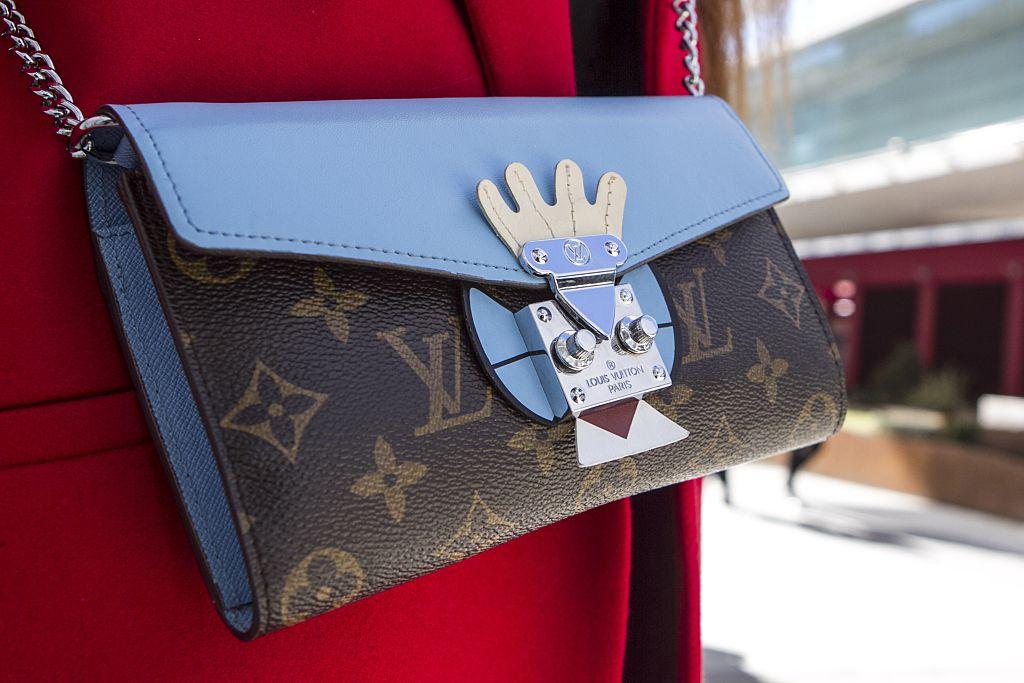Entrupy: New fashion app tells you if your designer handbag is fake
A New York startup aims to replace human experts with an app that analyses luxury brands including Gucci and Chanel

Distinguishing an authentic Louis Vuitton bag from a well-made fake is a subtle art that involves counting stitches, feeling the leather’s grain and poring over print patterns.
A New York start-up says it has a technology that can spot counterfeits without the guesswork.
Entrupy’s solution is a handheld microscope camera that lets anyone with a smartphone check a luxury accessory within minutes. Since launching the service a year ago, the company says its accuracy has improved to better than 98 per cent for 11 brands including Louis Vuitton, Chanel and Gucci.
Holographic tags, microprinting and even radio beacons woven into fabric have been used by fashion labels for years to help establish the authenticity of their products.
Apparel makers will spend $6.15bn (£4.75bn) on anti-counterfeit technologies in 2017, according to London-based researcher Visiongain, but the anonymity of internet shopping and the growing popularity of second-hand dealers is making the war against fakes harder.
“Even 10 years ago, a woman going to buy a second-hand bag would know very well that Chanel, Gucci and Prada don’t sell on the street corner,” said Susan Scafidi, director of the Fashion Law Institute at Fordham University in New York. “But now, with so much legitimate and illegitimate commerce occurring online, it is very difficult for consumers to tell the difference.”
The issue was highlighted last year when the International AntiCounterfeiting Coalition suspended the membership of China’s biggest online retailer, Alibaba, amid criticism that it and other e-commerce marketplaces weren’t doing enough to cull fakes.
Alibaba founder Jack Ma didn’t help matters when he said that Chinese-made knockoffs today can offer better quality than the genuine articles.
Second-hand online stores such as RealReal and Vestiaire Collective use experts with years of experience to determine the authenticity of the goods they buy and sell. It’s a painstaking process that isn’t absolutely foolproof, according to some online reviews from customers who complain they’ve been sold counterfeits.
Entrupy says its camera magnifies objects 260 times, so features invisible to the human eye become telltale signs: misshapen stamp marks, tiny gaps in leather grain, and paint overruns.
The device, which looks like a bulky flashlight with a wireless connection, can be leased for an initial fee of $299. Monthly plans start from $99. So far, about 160 businesses including pawn shops, wholesalers and online retailers have signed up.
“Today everything is done by humans,” Entrupy co-founder Vidyuth Srinivasan said by telephone. “For businesses that are growing, that’s not a scalable solution.”
Mr Srinivasan and two New York University researchers, Ashlesh Sharma and Lakshminarayanan Subramanian, started Entrupy in 2012, a year that was a turning point for computer vision.
A breakthrough in algorithms at a science competition called ImageNet vastly improved the ability of machines to identify everyday objects in photographs by using massive data sets to find patterns.
It was a watershed moment for deep learning technologies that also underpin self-driving cars and better speech recognition software.
With some help from Yann LeCun, Facebook’s director of artificial intelligence research and an angel investor in Entrupy, Mr Srinivasan and his partners started with a hunch that computers could be trained to look at pictures of luxury goods and extract a kind of genome, an essence of, say, a Fendi or an Hermes handbag.
The problem was that deep learning requires tons of data they didn’t have: none of the founders had a closet full of designer handbags, fake or otherwise.
After some unfruitful spy missions to the women’s sections of department stores, they convinced several New York second-hand shops to give them access to their inventories.
Getting the knockoffs was easier: one of the co-founders brought a suitcase-full back from a trip to China. Entrupy’s database now has tens of millions of photographs from about 30,000 different handbags and wallets. The software learns as clients upload new pictures.
Mr Srinivasan says the company has no relationships with any of the fashion brands whose products they authenticate.
The parent company of Louis Vuitton and other makers of luxury goods prefer not to acknowledge that there is a second-hand market for their merchandise.
Entrupy in July raised $2.6m from investors led by a venture between Tokyo-based Digital Garage and Daiwa Securities.
The money will be used to design a faster and more portable camera and add more brands to Entrupy’s list, according to Mr Srinivasan, who said the company is also looking at other uses for its software.
“The technology works pretty well on everything except for diamonds and porcelain, because those are refractive and we use optical analysis,” Mr Srinivasan said. “We’ve already tested it on auto parts, phones, chargers, headphones, jackets, shoes, even crude oil.”
Bloomberg
Join our commenting forum
Join thought-provoking conversations, follow other Independent readers and see their replies
0Comments